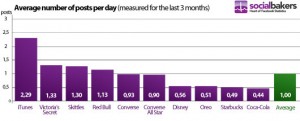The answers are in the data: Discover three ways analytics can help you put the pieces together.

How well do you really know your customers? If your company is like most brands, you already realize that you don’t really know them at all. In fact, a 2015 study from Aberdeen Group found that just 4 percent of organizations are fully satisfied with their ability to ensure data-driven conversations with their customers.
That’s a shockingly small number. And it’s also a huge problem, especially in today’s customer-first culture. Data-driven insights are the key to increasing customer satisfaction. If you don’t know your buyers, how can you really help them? That disconnect can very quickly translate into reduced ROI and decreased revenue for your business. That’s why it’s so important to incorporate data and analytics into every activity designed to support the customer experience. It’s simple math: better customer interactions equal superior business results.
So, if it’s so simple, why aren’t more companies doing it? What does it take to use analytics effectively, and how can you turn data into the kinds of insights you can use to meet the rapidly changing needs of your customers? Let’s look at three key strategies for success.
Start with a unified view of the customer journey
Every customer travels on a unique path to reach your organization. By understanding the different channels they use, the changing needs they have during various stages of their life cycles and what their behaviors are telling you over time, you can gain a clear view of who they really are — and what they want. Business intelligence and customer journey mapping tools can help you fill in the gaps in the customer picture. But of course, that information is just the beginning.
Turn data into insights you can actually use
Knowing your customers is only valuable if you actually put that information to work for you. That’s why it’s critical to take the huge volume of data you gather (and it will be huge) and make sure it’s integrated into everything you do around the customer — and across every team that’s involved in shaping your customers’ experience with you. It’s also important to keep that insight current. Buyer needs change quickly, and it takes a steady, ongoing assessment of the data to keep up with them.
Make sure the data is really working for you
Creating happy customers is only the beginning. It’s also important to make sure those customers are doing what you want them to do and converting in ways that matter to your business. So in addition to using analytics to personalize and customize their interactions, you need to continually track how your customer experiences are performing — and how they’re impacting your key indicators.
Putting it all together
Here’s an example. Let’s say you’ve just released version 2.0 of an exciting new smart watch. The company has set and is pursuing an aggressive target of increasing revenues by 10 percent in a very competitive market. They plan to achieve this business goal by developing and launching a multichannel campaign that targets customers based on preferences. A few days after launch, the marketing team logs into IBM Customer Experience Analytics to check the results. Traffic is up and customers are adding the smart watch to their shopping cart, but conversions are down.
Using the same solution and interface, the marketing team quickly identifies which customer segments are not converting. They drill directly into sessions and discover that a promo code entered by customers is not being accepted by the system.
The team wants to know where this bad code came from. They examine the entire customer journey and discover a typo in the promo code distributed on Facebook.
The team quickly takes action to fix the issue by issuing a correction. They identify the segment of customers who experienced the code denial and follow up with a personalized message apologizing for the error and providing the correct code. Once the code is fixed and the follow-up messages sent out, the team sees their conversion rate return to normal, positioning them to meet the desired 10 percent increase in revenues.
Only by using in-depth customer analytics, with a comprehensive view across channels, at a macro and micro level, and over time, can you really get to this degree of insight.
Marketing Land – Internet Marketing News, Strategies & Tips
(33)









